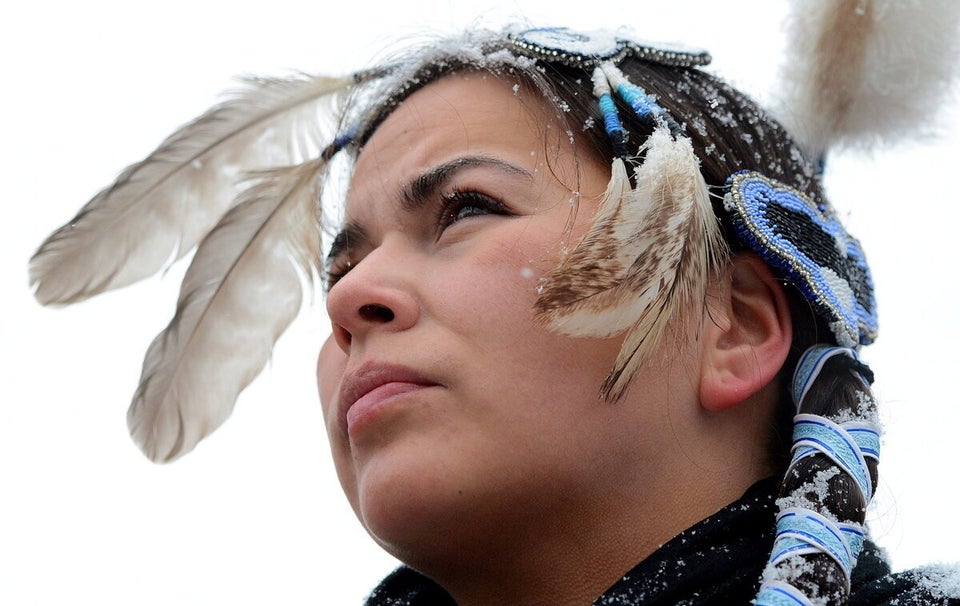
Many companies are realizing the benefits of partnering with First Nations, especially in the resource sector, and are developing Aboriginal Engagement strategies. Most are new to this process and don't know how to begin engaging with First Nations. Here is a simple five-step process that has been used successfully by many Canadian companies, governments and NGO's:
1) Begin by hiring, contracting or assigning a qualified First Nations Engagement Officer to act as the single source point of contact. First Nations do not want to talk to a desk or an office; they want to talk to a person. This person does not need to be of Aboriginal ancestry, though a strong knowledge of Aboriginal issues is required. Trust is the key to success in partnering with First Nations and it takes time and effort to build relationships.
"First Nations consultants offer Industry an opportunity to bring to the table capacity building, training and education programs which are results driven, focused on best practices, and understanding of the unique approaches required to ensure success of the initiative," says Dion Arnouse, President of 2 Badgers Consulting in British Columbia. "A new and refreshing change to Aboriginal/Industry business relations is that before the business dialogue starts, First Nations expect an effort from Industry to engage in a meaningful relationship building process before the 'Business Talk' begins. The expectation is that the dialogue will be open, honest and transparent with a focus on long-term goals and the creation of positive socio-economic outcomes for the community."
2) Introduce your company to the First Nations long before proposing a project. This proactive measure can take the form of training programs, sponsorships, scholarships, support and advocacy. A track record of involvement in the First Nations community is required before proposing any project, especially when public approval is required.
3) Be aware of all environmental concerns and traditional land uses. The First Nations decision makers are answerable to all community members, including many that non-natives might not see as important. This will include sustenance hunters, fishers and trappers, many of whom will be respected members of the community for continuing the traditional lifestyle and carry a lot of weight politically. The nearest comparison to this phenomenon in mainstream Canadian culture is the link many people have to their old family farm.
Andrea McLandress of Tervita Corp., a Calgary-based environmental and energy services company, notes it's important to remember that one size does not fit all when it comes to forging partnerships with First Nations. "We have the opportunity to interact with First Nations during all phases of project engagement, and we always try to engage with them early to determine if they're interested in working with us. Boilerplate consultation plans or business partnership structures really are a recipe for failure. They don't acknowledge the tremendous diversity that exists among First Nations -- and that includes what they want from industry and what they offer to a partnership."
4) Make your pitch to begin a project in partnership with the First Nation. Allow the First Nation to be an investor in the project and offer to assist with feasibility studies, community planning and with researching funding opportunities. Research and demonstrate each possible environmental impact and develop contingencies for industrial accidents. Be forthright and honest about the risks involved and don't try to dismiss or downplay environmental impact. Develop a land reclamation plan to restore the area to its pre-project state.
5) Finally, be in it for the long haul. Explain how the relationship will continue after project completion. This may include trusts, endowment funds, scholarships and continued investment from project revenues.
"One of the greatest outcomes of any project or partnership is the legacy that will and should be a key part of any project proposed with First Nations as part of the overall planning," according to Christian Sinclair, an expert on Aboriginal Engagement and member of the Opaskwayak Cree Nation, "Long after the project is completed, many of the workers and developers will go home, but what is left will be the true measure of success that the original landowners will have to live with. The legacy plan must factor in the environment, monetary, education, training, wisdom and life skills so that these gifts can be passed on to future generations in order to continue to grow and prosper."
